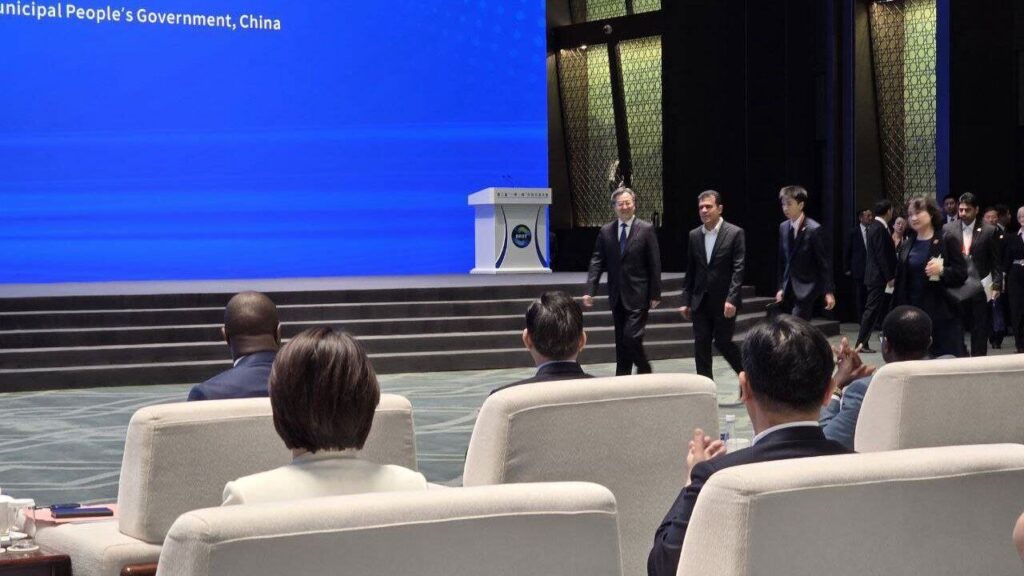TEHRAN – Attending the Second Belt and Road Conference on Science and Technology Exchange, Hossein Afshin, Vice President of Economics for Science, Technology and Knowledge Base, proposed six strategic plans to enhance technical ties along the Silk Road.
The meeting will be held from June 10th to 12th in Chengdu, the capital of Sichuan Province in southwestern China.
The six proposals are based on national capabilities, operational experience, and regionally oriented perspectives, the IRNA reported.
The initial plan focuses on the creation of a BRI (Belt and Road Initiative)-Techmatch platform, adapting to affordability and inherent technology to the needs of developing countries.
Officials also announced the possibility of launching the platform with the help of other countries to identify and replace low-cost technologies suitable for the climate. This has replaced low-cost technologies suitable for the infrastructure conditions of partner countries, particularly across sectors such as agriculture, health, energy and transportation.
The establishment of a regional centre in Tehran for future research and surveillance techniques in BRI member states was the second recommendation. In collaboration with universities and think tanks in these countries, the centre will monitor the development of emerging technologies such as artificial intelligence, biotechnology, new energy and quantum technologies and publish reports for decision-making.
The third suggestion involves launching BRI LabSnet. To ensure high quality technology exchange and provide affordable technology, Iran proposes to launch a multinational network of specialized laboratories to test and evaluate equipment and technologies produced in the country of BRI.
Implementing a regional technical skills training program focusing on youth in BRI countries was the fourth proposed plan. This includes the design of a collaborative training programme on technology digital skills for young people in developing countries, working with universities and online education platforms in local languages, providing practical content.
The fifth proposal concerns the development of an out-of-regional infrastructure network to expand the use of artificial intelligence in transport along BRI routes.
It provides the implementation of a series of collaborative projects to launch AI-based transboundary infrastructure in the areas of transport, smart logistics and route monitoring. This plan can cover data exchange, algorithm design, and sensor and analysis systems installation on key routes. This increases transit security along the BRI route.
The final proposal was to develop a Charter of Technical Cooperation for the BRI country, focusing on ethics, data governance and fair technology transfer. The Charter aims to collectively and voluntarily institutionalize principles such as respect for data regulations at the national level, bidirectional technology transfer, intellectual property protection, and sustainable technology development.
The second conference was “Building an Innovation Silk Road for Shared Development: Building an Innovation Silk Road to Work with the Belt and Road Science Technology Communities,” attracting participants from over 100 countries and international organizations.
The conference supports the principle of broad consultation and joint contribution for shared interests, aimed at strengthening exchanges, building consensus, depth of cooperation, and providing strong Sci-Tech support for high quality belt and road cooperation.
It features 38 events across five categories: major events, theme activities, special events, roundtables and technology matchmaking sessions. The discussion covers planning and policy coordination for academic exchanges, industrial innovation, international megascience projects, artificial intelligence, belt and road cyctech.
China is interested in developing Sci-Tech relationships with Iran
Din Jishen, the deputy prime minister of the People’s Republic of China, has expressed China’s willingness to support scientific and technical cooperation with Iran within the framework of the BRI.
Zhisheng met Afshin on the sidelines of a three-day meeting.
Chinese officials noted that, referring to the agreement reached between the two countries, China is willing to effectively implement Iran-China’s strategic partnership and promote high-quality cooperation within the BRI framework. “We are trying to further develop the scientific and technological cooperation capabilities between the two countries in order to provide more concrete benefits,” the IRNA quoted Zhisheng as saying.
On his part, Afsin said he was interested in Iran strengthening ties with China and achieving breakthroughs in major scientific and technical cooperation.
China and Iran formally defined their bilateral relationship as a comprehensive strategic partnership (CSP) in early 2016, when President Xi Jinping visited Iran. Strategic relationships have seen robust development ever since.
Iran demonstrates full support for China on a variety of issues, from China’s central national interests and those related to major international agendas proposed by China, such as the Belt and Road Initiative (BRI). China is also strongly supportive of Iran’s legitimate quest on many issues. China supported Iran’s legitimate position on the Joint Comprehensive Plan of Action (JCPOA), Iran’s position on women’s rights, and membership in the Shanghai Cooperation Agency (SCO) and BRICS.
mt/mg

